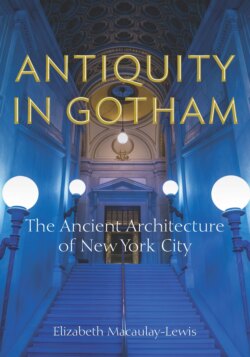Читать книгу Antiquity in Gotham - Elizabeth Macaulay-Lewis - Страница 11
ONE Herculean Efforts: New York City’s Infrastructure
ОглавлениеAfter nearly a century of planning and many delays in construction, the Second Avenue Subway opened on January 1, 2017, with much fanfare and Governor Andrew M. Cuomo riding in attendance.1 Well-lit stations with colorful mosaics of New Yorkers greet commuters at East Seventy-Second, Eighty-Sixth, and Ninety-Sixth Streets. The Second Avenue Subway has been transformative for residents of Yorkville, giving them a swift transit alternative to the routinely delayed 6 train, where a commuter too often feels like a tightly packed sardine. Unfortunately, most New Yorkers’ experience of riding the subway, before COVID-19, is typical of the 6 train. In January 2018, just 58.1 percent of all trains ran on time, a new low.2 While the subway lament is a refrain so common that it belongs to a Broadway chorus, it is a reminder of how fundamental infrastructure is to the running of any metropolis.
Since its founding, New York City’s politicians, bureaucrats, and businessmen have known that a well-functioning infrastructure—the basic physical and organizational structures that any city needs to operate—is vital to their city’s success. This chapter examines how ancient architecture, art, and ideas informed the conceptualization and creation of New York City’s street grid, water supply, bridges, and train stations. Before 1850, the city undertook two major infrastructure projects, both of which drew on ancient ideas and designs: the creation of Manhattan’s grid and the erection of the Croton Aqueduct and reservoir system, which included the monumental Egyptian-style Murray Hill distributing reservoir (1836–1842). The next great expansion of New York City’s infrastructure started at the end of the nineteenth century as the city became the megalopolis of Greater New York in 1898. Of these projects, three directly appropriated the architectural and artistic language of antiquity in their design, conception, and execution: the Manhattan Bridge (1909), the old Pennsylvania Station (1910), and Grand Central Terminal (1913). In the early twenty-first century, architects and planners have begun to revisit antiquity as modifications and improvements are made to Penn Station, demonstrating that the shape-shifting nature of antiquity makes it an enduring, multifaceted architectural source upon which New Yorkers could and still do draw for their functional and symbolic needs.
